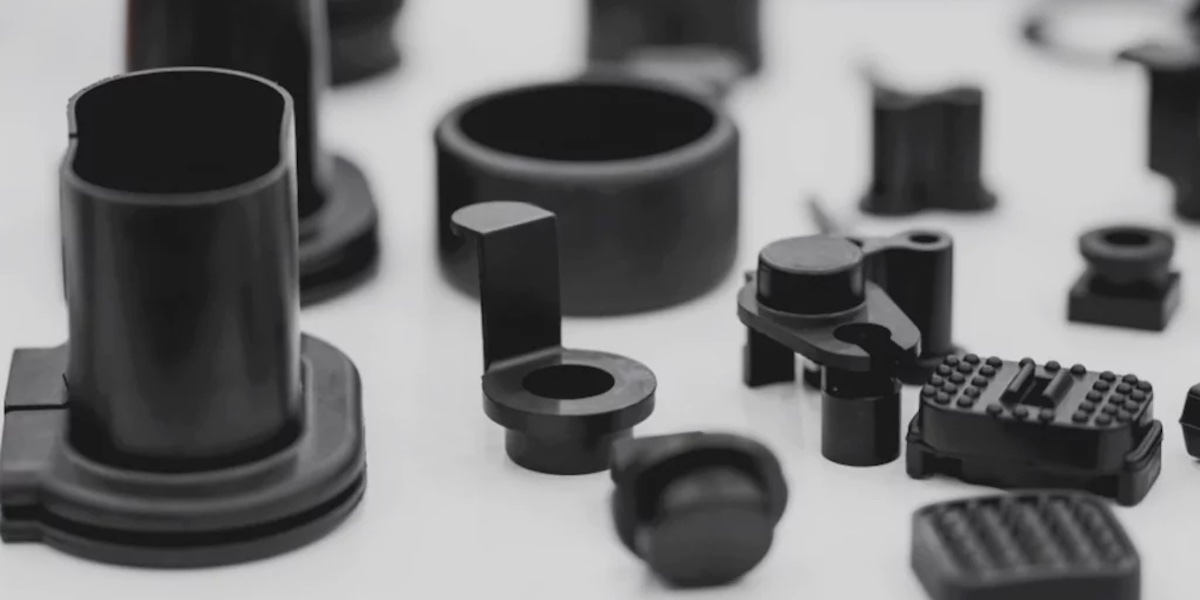Are you struggling to find the perfect materials for your fabrication projects? Many people are faced with the dilemma of balancing durability, cost, and ease of processing. Thankfully, ABS plastic has emerged. This versatile thermoplastic offers excellent strength, affordability, and precision, making it a top choice for countless applications. Take a deeper dive into this guide to unlock the secrets of CNC machining ABS plastic and elevate your manufacturing.
Understanding ABS Plastic for Machining
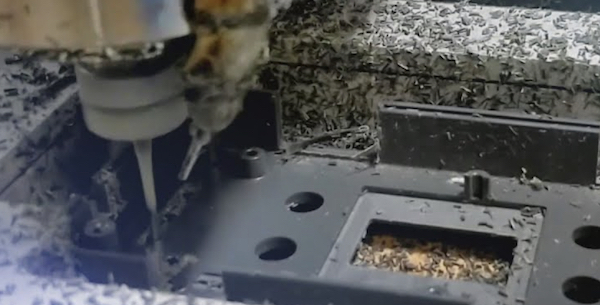
1. What is ABS Plastic?
Acrylonitrile Butadiene Styrene (ABS) plastic is a versatile and widely used thermoplastic polymer known for its excellent mechanical properties and ease of processing. You will find that ABS plastic is a popular choice for a variety of applications, from consumer products to industrial components.
Key Features of ABS Plastic:
- Durability: The toughness of ABS makes it ideal for products that need to withstand impact and abrasion.
- Versatility: ABS is easy to mould and can be used for complex designs and delicate components.
- Cost-Effective: ABS offers a good balance of cost and performance, making it a practical choice for many projects.
- Chemical Resistance: ABS is resistant to a wide range of chemicals, ensuring longevity and reliability in a variety of environments.
Why ABS is a Popular Choice for Machining:
- Ease of Machining: ABS is easy to CNC machine to produce high precision parts with complex shapes.
- Consistency: You will experience consistent material quality, ensuring predictable and reliable results.
- Surface Finish: With ABS, you get a smooth surface finish, which is critical for both aesthetics and functionality.
- Prototyping: ABS is particularly well suited for prototyping because it can be rapidly iterated and adapted without significant cost implications.
2. Properties and Characteristics
When choosing a material for CNC machining, it’s crucial to understand its properties and how they impact the final product. ABS plastic stands out for several reasons, making it a preferred choice for many manufacturers.
- Impact Resistance: ABS is exceptionally tough and can withstand significant impact without cracking or breaking. This makes it perfect for parts that need to endure rough handling or high-stress environments.
- Heat Resistance: ABS’s ability to resist high temperatures. This characteristic ensures that parts maintain their integrity and performance even under thermal stress.
- Dimensional Stability: ABS holds its shape well, which is vital for precision parts where tight tolerances are required. Its low shrinkage rate means your machined parts will remain accurate and consistent.
- Chemical Resistance: You will benefit from ABS’s resistance to various chemicals and solvents. This property ensures that your parts can be used in diverse environments without degrading.
See How ABS’s Characteristics Affect Machining Outcomes
Understanding how these properties translate into machining outcomes is essential for achieving the best results.
- Smooth Finish: The use of ABS results in a smooth surface finish, which is critical for both aesthetics and functionality. This smoothness reduces the need for extensive post-processing.
- Ease of Machining: ABS is easy to machine and reduces wear and tear on the tool. This not only extends the life of the tool, but also reduces overall production costs.
- Versatility in Design: With ABS, you have the freedom to create complex designs. Its machinability allows for detailed features that are difficult to achieve with other materials.
- Cost Efficiency: ABS is cost-effective to process due to its low material costs and short processing times. This efficiency can significantly reduce the overall project budget.
Benefits of CNC Machining ABS Plastic
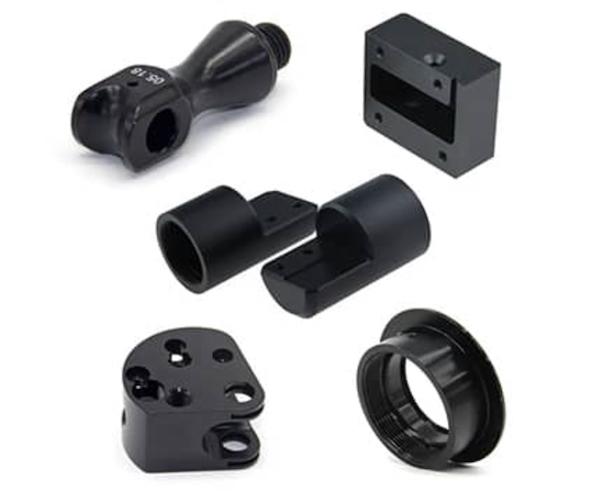
1. Achieving High Precision
Precision is paramount in the world of manufacturing, and CNC machining excels at delivering it, especially when working with ABS plastic.
Explore How CNC Machining Ensures Precision in ABS Plastic Parts
CNC machining offers unrivalled accuracy and is ideal for making ABS plastic parts to tight tolerances. The computer-controlled system allows for precise movements, ensuring that every cut, hole and slot is finished with the highest level of accuracy. This precision is essential for making complex geometries and detailed features with consistent accuracy from part to part. CNC machines can repeat the same operations, minimising deviations and ensuring consistent parts.
Understand the Importance of Accuracy in Various Applications
In the automotive industry, perfectly fitting parts are needed to ensure the safety and performance of the vehicle. In the medical field, precision can mean the difference between a functional part and a defective part, which can affect patient safety. For consumer electronics, precision machining ensures that parts fit together perfectly, providing a high-quality product experience.
Precision in CNC machining reduces material waste. By enabling precise cutting and reducing errors, you can optimise the use of materials, which not only reduces costs but also contributes to sustainability. In addition, high precision reduces the need for extensive post-machining processes, which saves time and labour costs.
2. Reducing Manufacturing Costs
One of the most significant advantages of CNC machining ABS plastic is the potential for cost savings. You will discover that by using CNC machining, you can lower your production costs in several key ways.
How CNC Machining Can Lower Production Costs
You will find that CNC machining requires less manual intervention than traditional machining methods, thus reducing labour costs. The automation of CNC machines allows you to run them continuously with minimal supervision, which reduces labour costs. In addition, the precision of CNC machining means fewer errors and waste, which directly reduces material costs.
CNC machining speeds up production time. Faster production cycles mean that you can complete jobs faster and take on more projects in the same amount of time, increasing your overall productivity and revenue. In addition, the high efficiency of CNC machines allows for rapid prototyping, enabling you to test and iterate on designs quickly without investing significant time or resources.
Examples of Cost-Effective Manufacturing with ABS Plastic
There are numerous examples of how CNC machining of ABS plastics can improve the cost-effectiveness of manufacturing. For example, in the consumer electronics industry, companies often require large quantities of precision-machined parts. By using CNC machining, they can produce these parts quickly and accurately, which reduces production time and costs.
In the automotive industry, CNC machining can produce custom parts at a fraction of the cost of traditional methods. This is particularly beneficial for small production runs or prototyping, where the cost of injection moulding tooling would be prohibitively expensive. CNC machining offers a flexible, cost-effective alternative.
Another example is the field of medical device manufacturing. CNC machining can produce complex, high-precision parts that meet strict regulatory standards. The precision and repeatability of CNC machining reduces the likelihood of costly errors and ensures that each part meets the necessary specifications, which is critical in the medical field.
CNC Machining Techniques for ABS Plastic
1. Milling Techniques
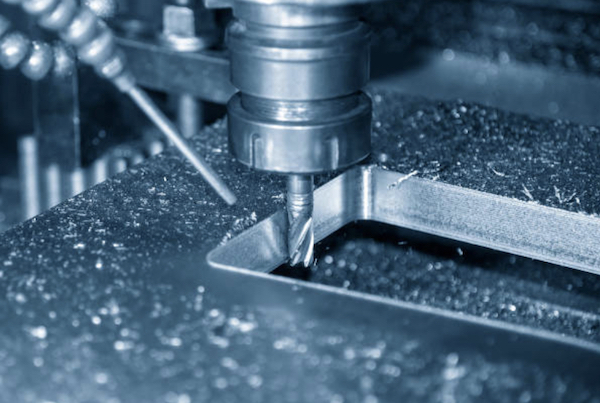
Milling is a highly effective CNC machining technique for working with ABS plastic, offering precision and versatility. Suitable milling techniques include both conventional and climb milling. Conventional milling involves the cutting tool rotating against the direction of the feed, while climb milling rotates with the feed direction.
To achieve the best results with milling, it’s important to use sharp, high-speed steel or carbide tools. This ensures clean cuts and prevents the material from melting due to friction. Proper tool selection, combined with optimal spindle speeds and feed rates, helps maintain the integrity of the ABS plastic, reducing the risk of warping or deformation.
Additionally, using coolant or air blasts can help manage heat build-up, further protecting the plastic from melting and ensuring a smoother surface finish. By maintaining consistent and appropriate cutting parameters, milling can produce precise, high-quality parts with excellent surface finishes, suitable for various applications.
2. Turning Techniques
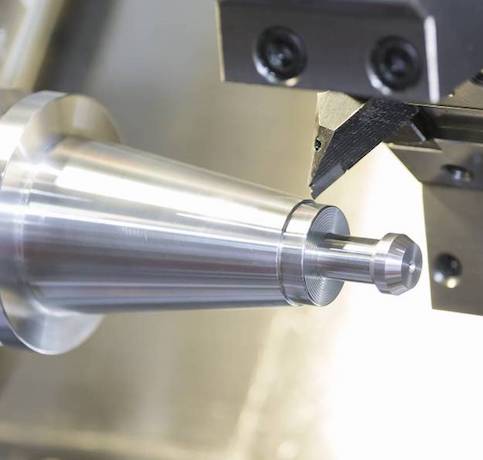
Turning is another crucial technique in CNC machining of ABS plastic, ideal for creating cylindrical parts. Techniques such as rough turning and finish turning are commonly used. Rough turning involves removing large amounts of material quickly, while finish turning focuses on achieving finer details and smoother surfaces.
Exploring turning techniques starts with selecting the right cutting tools, preferably those made of high-speed steel or carbide. These tools should be sharp to ensure clean cuts and minimize heat generation. Setting the appropriate cutting speed and feed rate is essential to avoid melting or distorting the ABS plastic.
Turning processes enhance the quality of your parts by enabling the production of precise and smooth cylindrical components. The use of coolants or compressed air can further improve the finish and dimensional accuracy by reducing heat and clearing away chips. This results in parts that not only meet stringent specifications but also exhibit excellent surface finishes, suitable for both prototyping and end-use applications.
By employing effective milling and turning techniques, CNC machining of ABS plastic can yield superior results, ensuring your parts are both high-quality and cost-effective.
Best Practices for CNC Machining ABS Plastic
The rise of additive manufacturing, commonly known as 3D printing, has revolutionized the production of custom metal parts. This technology builds parts layer by layer, offering unprecedented design freedom and efficiency.
1. Choosing the Right Tools
Selecting the best tools for machining ABS plastic is crucial for achieving high-quality results. High-speed steel (HSS) and carbide tools are excellent choices due to their durability and ability to maintain sharpness. These tools can handle the unique properties of ABS, ensuring clean cuts and preventing issues like melting or warping.
The impact of tool choice on the final product cannot be overstated. Sharp tools reduce friction and heat generation, which are critical for maintaining the integrity of ABS plastic. Using appropriate cutting tools not only enhances the precision of the machined parts but also extends the life of the tools, reducing overall costs. It’s essential to regularly inspect and maintain these tools to ensure consistent performance and quality.
2. Optimizing Speed and Feed Rates
Setting optimal speed and feed rates is another vital aspect of CNC machining ABS plastic. Proper settings prevent overheating and ensure smooth, accurate cuts. For ABS plastic, moderate spindle speeds and feed rates are often the most effective. Speeds typically range from 1,000 to 2,000 RPM, while feed rates can vary from 100 to 300 mm/min, depending on the specific operation and tool used.
Examples of successful machining settings include using a lower feed rate when working with intricate details to prevent material deformation and a higher feed rate for roughing operations to remove material quickly without compromising quality. Coolants or air blasts can be used to manage heat and clear away chips, further optimizing the machining process.
Implementing these best practices helps achieve precise, high-quality parts while minimizing material waste and tool wear. By focusing on the right tool selection and optimizing machining parameters, CNC machining of ABS plastic becomes more efficient and cost-effective, delivering superior results for various applications.
Applications of CNC Machined ABS Plastic
1. Prototyping and Testing
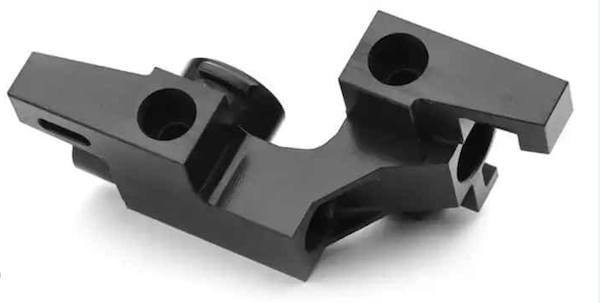
With its excellent workability and versatility, ABS plastic is a popular choice for prototyping and testing new designs. It is easy to work with, allowing prototypes to be produced quickly so designers and engineers can iterate and refine their designs. the durability and impact resistance of ABS plastic ensures that prototypes can withstand rigorous testing and functional evaluation.
Advantages of using ABS for prototyping include cost-effective, detailed and accurate models.ABS prototypes mimic the characteristics of the final product, providing valuable insights into performance and functionality before entering mass production. This reduces the risk of costly errors and ensures that design flaws are identified and addressed early in the development process.
2. Manufacturing End-Use Parts
CNC machined ABS parts are widely used in the manufacturing of final products across various industries. The material’s strength, stability, and resistance to impact and chemicals make it suitable for a range of applications, from consumer electronics to automotive components.
Industries that rely on ABS plastic components include:
Consumer Electronics:
ABS plastic is commonly used for housings, enclosures, and other parts that require a smooth finish and robust performance. Its ability to be easily machined into complex shapes makes it ideal for intricate electronic devices.
Automotive:
The automotive industry benefits from ABS’s durability and lightweight properties. It is used for interior components, such as dashboards and door panels, as well as exterior parts like trim and mirror housings.
Medical Devices:
ABS plastic’s stability and resistance to sterilization processes make it a preferred material for medical device housings and components. It ensures that devices are reliable and safe for use in medical environments.
Industrial Equipment:
ABS is utilized in the production of various industrial equipment parts that require toughness and precision. Its machinability allows for the creation of custom parts tailored to specific industrial applications.
By understanding the diverse applications of CNC machined ABS plastic, it becomes clear how this material plays a crucial role in modern manufacturing. Its combination of properties makes it an invaluable resource for both prototyping and the production of high-quality, durable end-use parts.
Conclusion
CNC machining of ABS plastic offers unrivalled precision, durability and cost-effectiveness, making it ideal for a wide range of applications, from prototyping to manufacturing end parts. Its versatile nature ensures high-quality results and consistent performance across a wide range of industries.
Ready to take your project to the next level with expertly machined ABS plastic parts? Contact Rally today, and we’ll provide you with top-notch CNC machining services tailored to your needs. Our team will help you achieve exceptional quality with every part you produce. Contact us today and let us start turning your ideas into reality!
FAQs about CNC Machining ABS Plastic
Is ABS plastic easy to machine?
Can ABS plastic be used for both prototyping and production in CNC machining?
How does CNC machining of ABS plastic differ from 3D printing ABS?
How do I ensure quality in CNC machined ABS parts?
How to get a quote for CNC machining services for ABS plastic?
Work with RALLY for CNC Machining Parts
Request a quote for new project today! No minimum order quantity and free samples available!

